In this talk, Dharmesh addresses “professional fears” in running and growing a company: from going remote (pre-Covid), switching to Macs, to choosing the best target customer and addressable market.
At the heart of many professional fears lies a form of FOMO, or “Fear of Missing Out”. By going remote, are you missing out on employee control and oversight? By focusing on a customer segment are you missing out on a bigger market?
The answer of course… depends. But Dharmesh draws on personal experience building Hubspot to help you grow bigger by dealing with these kinds of fear and being able to make bold decisions.
Slides
Find out more about BoS
Get details about our next conference, subscribe to our newsletter, and watch more of the great BoS Talks you hear so much about.
Transcript
Introduction
Hello, everyone. Alright. I’m Dharmesh. That hashtag is more for me than for you—just so I know where I am. It’s been one of those weeks. I know. It’s only Monday. Seven and a half days ago, Mark asked me if I wanted to speak at Business of Software. Seven and a quarter days ago, I said yes.
For those of you who don’t know me, I’m the co-founder and CTO of HubSpot. I’m not going to talk much about HubSpot or the things we’ve screwed up along the way. I’m not trying to sell you anything.
My History with Business of Software
So I have a long history with a business after the first one was 2008. And then nine, and 10, and 11, and 12, and 13. And the last time I spoke was in 2016, which was three years ago. So this is one of the reasons I had to say yes, because there’s a pattern here is like 1111133. And of course, like three, hi, Ray, by the way. So here I am, so that you won’t see me again till 2022.
So anyway, so the reason I’m here actually is I love this, I love this event, love this conference, because it’s the intersection of two things that I love. I love business and startups and things like that. And I love software. And this is like the intersection of those two things. That’s one of the reasons I say yes, I love this crowd. Hopefully you will like me, it’ll be reciprocal.
How many people have heard me speak before? I’m just curious.
Wow. Okay. My apologies. All right. So I’ve got a little bit better. I’ve read some books. Unfortunately, this is not one of them. I wish someone had written this because that would be awesome. The other thing I’ve done is I’ve watched lots of TED talks are actually more TEDx, it’s less highfalutin. The ideas are more relatable for me.
So TEDx has been great. And, you know, 40% of the TEDx talks are about public speaking as it turns out, but really, if I were going to do something like that, I think would be even more useful that someone should do is what I think of as dreadlocks talks. Instead of sharing ideas, which some people have is to actually share fears which all people have, by the way, like just full on disclaimer, that’s it this is completely made up this thing does not exist.
Dread X is not a thing has nothing to do with Ted nothing to do with Chris Anderson, my apologies. It’s just a little bit of levity at the end of a hopefully long productive day. But just by the way, I own dronex.com and dread x.org don’t read into that I own 400 domains that have done nothing with so anyway.
Common Fears
Alright. So, talking about fears, by the way, like more things I’ve learned, like all you need to be relatable with the audience is like, Okay, well, fine. We all have fears, we have personal fears. We have professional fears.
Since we’re at a business event, we can think of them as b2c fears and b2b fears. So I’m gonna share some, like, personal fears, just to get things kicked off.
The first one is low battery warning. I hate that thing. I hate it. It makes my heart race and not a good way where you get credit on your fitness tracker. It’s like why that fears like well, without, without batteries, and like our devices die. And without devices, all we have is each other. That’s people like it’s hard.
So the second thing is eye contact. I’ve always been very, very fearful of eye contact and some of your thinking, well, he’s making eye contact with us right now. No, I’m actually not, I’m looking at your foreheads. It’s one of things you kind of learn. You have lovely foreheads, by the way, well done.
And the last one that some of you are wondering is like, why would Dharmesh be afraid of yoga splits, he doesn’t seem like the type that would do yoga, or splits. That’s actually a fear of water. I have a very rational fear of water because I can’t swim. Just never learned. So it’s one of those things. So you see a photo like this. And some of you might think, Oh, that’s a nice tranquil pool. And it is it’s in a hotel up in Maine. And I look at a photo like this, and I think danger, death awaits. And like, Oh, I did not properly prepare to die today. And it’s interesting, so and it’s been fine, you know, so I just avoid things that involve water. Beaches. waterparks cruises are fine because cruise ships are practically continents, like Australia. So And everything’s been fine for a long time. It’s like, okay, I’ve missed out on a few things, but it’s been okay. But then I have a son now, and he’s eight. And he also has a fear of water. And so I’m like, late that night in Maine, I was at that pool at that hotel.
And I’m thinking, like, is this kind of fear of water thing like acrophobia is this like, is a genetic that I pass this along to my son? What have I done to my son, like the son of Aquaman would never have this issue.
As I’ve been like, pondering this and pondering this, I talked to my wife Kiersten and she says, Yeah, you know, could be genetics, but maybe he just needs to learn how to swim. Like, that’s an interesting thesis. Sure, we’ll try that.
So you put my son sohan in swim class. And lo and behold, the boy can swim as if he were the son of Aquaman. And so this is him at the same pool that he would not put a toe in the water at the shallow end, this is him cannon balling into the deep end of that exact same pool.
So turns out, it’s not genetic, you can actually learn these things. Right. And the way to actually overcome some of these kind of fears, or intense anxieties is often not just a single thing. It’s a combination of multiple things come together.
And one person that knows a lot about the combination of things is this dude.

Now, you probably don’t know who this dude is. Because all dudes in the 18 hundred’s looked like this. So it’s hard to really know actually, 200 years later, lots of dudes still still look like that.
Actually, it’s exceptional beard game nicely done. My personal congrats to I mean, thanks to to Ian, who posted this. So that photo was from this tweet, and then flipped and photoshopped.
So anyway, back to this dude. So I’m gonna give you a hint as to who this is.
This is number one. A few of you got. And this is hint number two. Much bigger hint, much bigger hint.
And so this is indeed, John Venn, who was a mathematician from Cambridge UK. Here they have a Cambridge over there too. And, you know, so Venn diagrams are part of set theory, which many of you likely encountered in high school, or if you’re from India, like me, first grade. And and here’s a simple example of a Venn diagram.
So you have Paul Simon, gifted musician, singer, songwriter. You have Art Garfunkel? Who has a name Garfunkel slightly more.
Can you have animated characters who love carrots? You have animated characters who are loyal friends like trek frex donkey from Shrek, by the way, it’s not like the donkey from Shrek. The character’s name is donkey just now you know. And then you have the intersection, you have animated characters that both love carrots and are loyal friends. This is what I like to call a Venn diagram.
I know. Bad with the good folks bad with the good. It’s, you’ve got dad on stage wearing dad jeans, you have to be prepared for dubious dad jokes. That will not be the last. I know, some of you are not like you experiencing like a little bit of FOMO. It’s like, Oh, I didn’t quite get that. Why are people laughing? Just let it go. Okay.
So overcoming obstacles often involves it’s an intersection of different complimentary things. And so we kick this off with, you know, I posted this LinkedIn post.
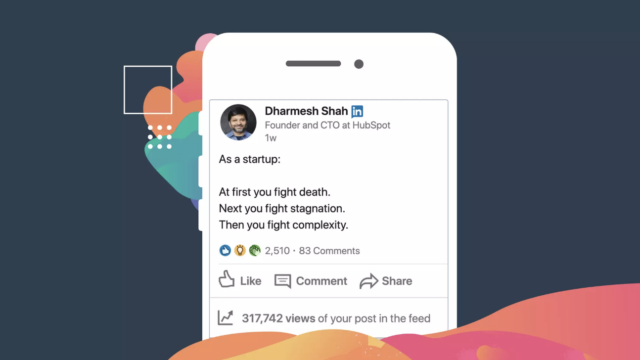
And it’s about startups, I’ve kind of lived multiple times. It’s like, first you fight death, you’re just trying to survive every day. And the next few fights stagnation is like, oh, we’re not growing anymore. We need to be growing more. And then finally, you fight complexity until your death essentially that’s what happens.
And so what I’d like to talk about our five fears, in a professional business context that we’ve had to deal with, we’ve struggled with, I’ve personally struggled with over the 13 years of HubSpot, and likely even before then, and the one thing that’s important to note before we talk about the fears is that not all fears necessarily need to be overcome or managed.
There are some fears that are actually good. There are some things that are legitimately scary that you should be fearful of. There’s a reason for it.
But I think the trick is actually separating the two like what are the fears that we should be having, and where the fears that we don’t need to be having that are kind of holding us back. So that’s the context.
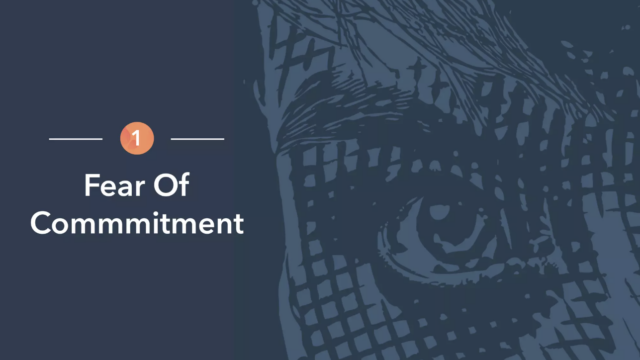
The first one is a fear of commitment. And I have a paradoxical relationship with this because I am personally very committed.
My wife and I have been together for 27 years. I’ve been working on HubSpot now for 13 years, I’ve been wearing this T shirt for 10 years.
But because I’m so committed because things tend to stick with me, I’m very, very mindful of making commitments. So I have like, I really overanalyze and overthink it. And what I end up doing a lot of times is just instead of picking one path or the other, I just, I kind of either hedge or don’t make a decision at all. I did this all the time.
And we, what we call the result of this HubSpot, when you had your receipt is like an uninspired compromise essentially is like okay, well, you’re not really finding a creative solution through it’s just, it’s a compromise. That’s the middle of it doesn’t satisfy either side. And it’s like a non decision decision. And we did this all the time, at HubSpot, and to some degree, we still do, hopefully a little less frequently now.
And, you know, the lesson we’ve learned is that when you don’t kind of commit, you’re essentially compromising on everything over time. And it’s just got this trickle down effect.
So here’s one of things we struggled with in the early years of HubSpot is figuring out who our target customer was going to be like. Who are we out to serve? Who are we building this for?
And there’s a term many of you if you’ve ever raised venture capital or tried to there’s a term called or if you’ve made the dubious decision to befriend an investment banker, I know there’s not any investment bankers in the audience, I look through the list.
It’s a total addressable market. And this is the Oh, like, what is the potential opportunity here? What if you take all possible customers multiplied by some price point of some future state product? What’s the overall thing which I think is useful?
But not really, because most things if you squint just right, and look at it, just the right angle is a multi billion dollar opportunity, right, based on how you define it, it’s not particularly useful. The thing that I think is more useful is Iam, which is not the middle initial last name of the Black Eyed Peas lead singer. It’s the immediately accessible market.
So forget future state like right now with the product you have. If you sold to all potential customers, like what’s the immediately accessible market that you have? And that’s a much more interesting thing.
And Brian, my co founder, I struggled with this decision around Okay, so what is the market we’re going after? Who are the customers like everything we would read would tell us, as would potential investors like okay, well, you say small, medium sized businesses, that’s too broad. You can’t just do that you have to pick. And so here’s a photo of us first year of HubSpot.
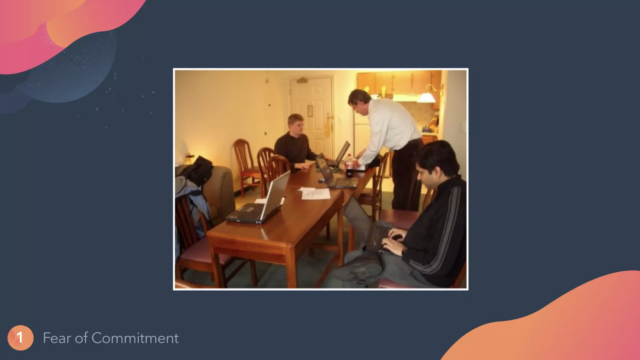
And this is us having an animated debate on target market, over email, no eye contact. That’s why and you can’t tell this from the photo but we are mid compromise right here. This is us mid compromise.
Just a few observations on this photo. I know this looks like a fortnight marathon for dads. It’s not. It’s a suite at the Marriott that is across the street from the first HubSpot office in in Cambridge. And so you might be wondering, it’s like why are you working out of a suite at the Marriott instead of HubSpot office?
And the answer is because HubSpot was on fire. And I don’t mean like we were growing really fast. I mean, literally on fire.
There was an electrical blowout in the building there. Oh, don’t you hate when people use the word like literally? When they actually mean figuratively? Like, I hate that. It’s like, oh, like my heart literally broke into 1000 pieces when I heard that Ed Sheeran was no longer touring. I’m saddened by that too. But did your heart really break? Like did you count those pieces?
So when I say HubSpot was literally on fire was there were flames and stuff anyway. Observation to Brian, my co founder is as always ahead of his time, this is him working while standing before standing desks were a thing called a hunting desk. And both of us back then were working on PCs. And we have subsequently switched to Mac’s because Brian loves all things apple and me because of the free youtube album.
Okay. And so we went back and forth on this on this debate. It’s a core debate. weeks, months, years, long enough that there was a Harvard Business School case written about the stupidity of having this debate for years in an early stage startup, it was bad because we just couldn’t find yourself we couldn’t commit, couldn’t commit.
And so what we’ve learned since then is what you really want is you want a market that’s just big enough to grow for the growth that you need right now.
But it’s small enough that you can delight those customers, you can kind of focus narrowly enough at the intersection of those two things is where you kind of get the optimal kind of growth curve. And wish we had kind of had this degree of clarity back then and we did not. And so kind of lesson we’ve learned is that the kind of and this is sounds contradictory is like the narrow you can make your market in the early days.
Instead of broadening it, the easier it is to grow because you understand your customers better To build a product better, it seems, now that I see it’s like, this is so obvious, I can’t believe we missed this we did.
The other lesson kind of related to that is like, there will be times, that’s like, Okay, well, we’ve done that we’re kind of on the path now. But now we expand our market, we got the early one, right, we’ve been growing. Now it’s time to add another product, we can expand our overall market, which happens, and it’s fine.
The lesson we’ve learned here is that if you think about this in two axes, you can say, Oh, I’m gonna take the existing product and existing customer and keep the product the same and go to a new customer. You can go along the x axis to say, I’m going to create a new product, but the existing customer, or you can do the super silly thing and say, Oh, I’m going to create an entirely new product for an entirely new set of customers.
Noncontroversial relative obvious is that that top right corner is obviously the highest risk, because you’re changing two things at once, both relatively big things, I would posit that actually this one is lower risk. But this one is actually the lowest risk. And the reason is, obviously things vary based on situation.
But overall, like in today’s day and age, I think it’s actually easier to build a new product than it is to build a new base of customers, products have gotten a little bit easier to build, especially if you’ve been at it for a while you have components that you can pull things off. So most software companies that I talked to, when they introduce new products, they’re not completely new products, like oh, we’re going to reconfigure. We’re going to reuse our database in this in this in our provisioning in our security and our excellent all that stuff.
There’s a fair degree of leverage that happens in the software business. And I, one of my long running theories is that long term success of a software company is actually very highly correlated with the degree to which you can kind of leverage your existing kind of code base as you can expand and building products.
So the message here would be, you know, commit to your code, not just commit your code, like, Okay, this is what’s going to be here for a while, which it will, it’s okay to take on technology debt, just pay it off over time, and don’t compromise on that. And so, what we often fear, what we feared is this kind of fear of this kind of unwavering commitment, the thing we actually should fear or uninspired compromises, those are the things that are insidious, they kill you, over a long duration, duration of time.
I think one company that’s doing this, well, here in the audience, is ALM Works. So just so they launched their product structured, and the company’s been around longer than that in 2011. So it sits on top of JIRA, it helps you organise your JIRA stuff. lm foot works, folks in the audience, raise your hand just Hi.
And so I wasn’t in the meetings, by the way, I have no idea who they were until 2am. Last night. And what was interesting was as they expanded, so they did this Right, right, which is we’ve got our kind of product base, we’re going after JIRA, it’s not what they could have chosen to do when they expanded, oh, we’ve got this kind of thing to organise, track and manage issues.
And we could go from JIRA from Atlassian to some other issue tracking system and just take that product idea and go to new customers using some other system, they could have done that, I would posit that would have been much higher risk. Instead, what they did is Oh, we already have a base of JIRA customers that love us, we have a presence in the Atlassian marketplace, and we’re just going to build more products for those same customers. And that arguably has worked out well.
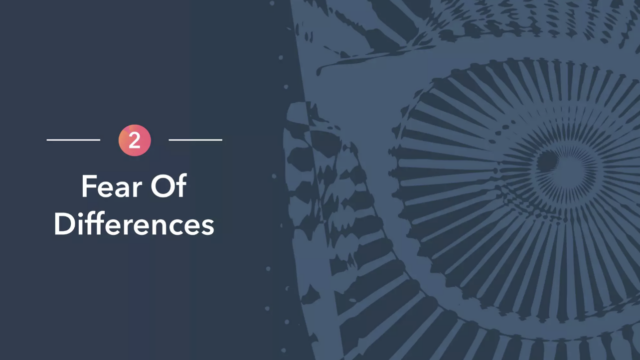
Okay, fear number two: fear of differences.
This one’s older person, I’m gonna go back in time, long, long, long way back in time. So this is me. I’m five. And then some of you, you’re thinking, well, he was able to make eye contact, back then he’s making eye contact. No, I’m not. I’m looking at the photographer’s forehead.
It’s, if you’re wondering why I’m wearing a tie. Back then I had not yet discovered that one could just start a company and then wear logo t shirts for the rest of your life, including on stage. Had not figured that out yet.
So this is me 1.0 I’m out of beta. Now this is me in my early 20s. I’m not even gonna comment on the y2k or the gold chain over the shirt. It’s it’s what was interesting though.
So when I moved here from India, I was wanting to like just desperately fit in. And I didn’t make the choice. It just turned out that way. But I went to Alabama of all places to go. And so I did several things to kind of I said, Okay, well, I’m gonna work on losing my accent in the hopes that will help me fit in better. I changed my name from Dharmesh to Dave.
This is me 2.0. By the way, in the hopes that it would help me fit in it’s like okay, well and makes life easier at Starbucks. And I went clean shaven, like it’s like a change of coke. I just want to I just want to fit in. And I did that for years and years and years.
And this is me 3.0, current generation. So still geeky as always, now I shave whatever the hell I want. And I went back to my original branding, back to Dharmesh. It’s, I just use my first name, not because I’m cool, like Madonna or Adele is because it’s sufficiently dis ambiguous to use Dharmesh in most circles I travelling, including my family, as it turns out, it’s weird.
And so, I’ve been working on this on this issue for a while. And then me 3.0 I moved out of Alabama, came here to the Boston area and went to MIT for grad school. And while I was at MIT, I met this guy named Brian Halligan, who’s very colourful, now CEO, co founder, and co founder, not when I met him, but anyway, and so but he had like, one kind of glaring problem. And the problem was that he was in Business School, and he was going to be an MBA. This was a problem.
Now, it’s not that I have anything against MBAs, I love MBAs. Two thirds of my friends, are MBAs or two out of three. And I don’t mean like 67%. I mean, I have three friends. Two of them have MBAs.
So but the issue was that if you have an early copy of too many MBAs running around, they start using words like disruption and correlation and causation. Now, ironically, that can be very disruptive.
And so Brian, I did end up starting a company, which is now HubSpot. And the issue was, I was an MBA student too. And so this is the early team at HubSpot. And these, this, in hindsight, wasn’t really an issue. But we had a massive issue in that early team and the massive issue. Why, by the way, I’m sorry.
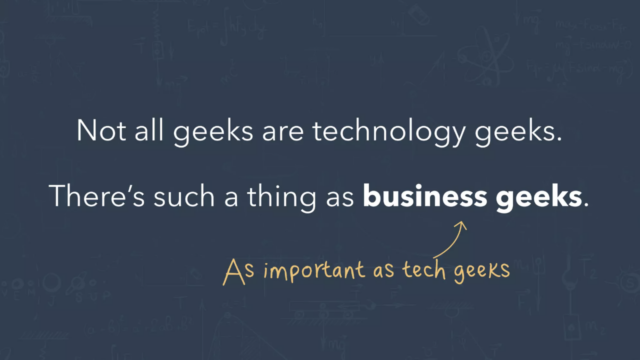
So MBAs are not bad. They’re business geeks, business geeks important. This is the issue. They were all men, all from MIT, in a relatively similar background, what little diversity there was on that early team, you’re looking at him right now. And if I had like a time travelling DeLorean, and if I go back and change things, this is one of the things I would fix. We just did didn’t think about it, then it’s like, like, it hadn’t been an I, heart. And this might be rationalisation of like, I had spent so much time and calories, trying to fit in, I hadn’t really considered the notion that other people might have a hard time fitting in with us and kind of joining the company, we were just very kind of insular in our thinking.
And we just kind of hired for convenience, because that was those people we were around and kind of knew. So that’s the one thing I would change. I would might also, while I’m at it, like the Game of Thrones series finale, but mostly the diversity thing, obviously, diversity.
So the lesson learned here is like the best time to be thinking about diversity is time equals zero, you’re starting a new company, starting a new team within a company, you start a new project, like think about it, then the next best time to do that is now so if you haven’t thought about diversity, and we kind of got into it, and got realisation relatively late, but it’s been, it’s been impactful in terms of so this is when when you don’t think about diversity.
It’s it’s a form of, it’s a form of debt. It’s like it’s culture debt. And so when you take on technology debt, it’s like, Okay, I’m gonna take the shortcut, and I’ll rewrite the code, and you will and you’ll pay that off, and you will, and you’ll notice, like, Oh, I rewrote that code, no big deal.
Financial debt, same thing you pay in right off the check, this kind of debt is actually much, much trickier. Because you don’t really ever completely pay it off. Like, we’re still paying, like, you can’t fix it. Because all the things that happened, subsequent to that point, like what will the team Look what have looked like what or where would we have been?
Anyways, my recommendation would be, start thinking about if you aren’t already matters. Yeah. And so, kind of lesson I’ve kind of carried with me it’s like, Okay, well, you know, once I accepted that, it’s like, oh, it’s not just okay or tolerable, to be different. It’s actually better. Once we kind of got that religion, so to speak. Things have turned out better kind of invested in that. Okay.
Want more of these insightful talks?
At BoS we run events and publish highly-valued content for anyone building, running, or scaling a SaaS or software business.
Sign up for a weekly dose of latest actionable and useful content.
Unsubscribe any time. We will never sell your email address. It is yours.
So I’m an introvert. And lots of companies, when they hire, they do things like Myers Briggs to kind of test personality types, which I disagree with, like bucketing people into this versus that, like, Oh, we only hire salespeople that are extroverts or engineers are introverts, but you don’t need Myers Briggs actually have a very simple test if you’re just curious as to whether you’re an introvert, or an extrovert.
So in about five seconds, I’m going to ask you to turn around, introduce yourself.
I’m not going to do that.
I’m not gonna I would never do that to you. I don’t know if you can feel your heartbeat in your face right now. You’re probably an introvert.
But I do have I have a test. So here’s the test: I want you to think of a sentence that uses the word network. Don’t overthink it, just whatever sentence pops into your mind that uses the word network. Okay?
If the sentence in your head uses the word network as a verb, I went to that party so I could network, chances are you’re an extrovert.
On the other hand, if you use the word network as a noun, I didn’t go to the party because the network was down, chances are, you’re an introvert, and the only parties are going to our land parties.
And for those that didn’t laugh at the awkward land party reference, you’re extroverts. And in the minority here, as it turns out, so back to this.
So the, there’s this kind of fine line, and companies use this phrase, as did we, for a long time.
And she’ll do it’s like, oh, we’re, you know, this person has a culture fit. And there’s a fine line between that and this person is basically a clone of me.
It’s like, understand why you’d want to hire a clone of you. You’re awesome. But over time, it’s like that kind of keeps kind of replicating itself. And then you have you have an issue, you have this kind of toxic homogeneity in the business over time.
And so then the question might be like, Okay, well, how do I know if I’m actually hiring for culture fit correctly, versus hiring for convenience?
And the answer is, like, the number one thing you need to do is: You need to know and others need to know what your culture is. You can’t say you’re hiring for culture. If no one knows what that culture happens to be, that’s just then it’s just shorthand for Oh, I like this person, or they’re like me, or whatever, I’m just gonna hire them.
And so my recommendation would be their limited number of things that I’ve spotted God, I think really right. Writing our culture down was one of them. That’s the one thing I would suggest every company does. It doesn’t have to be 128 slides like HubSpot is culture code happens to be.
It can be a single piece of paper and just answer these kind of simple questions:
- What are the things that you value?
- Who do you value and how we operate?
- How do you make decisions within the company?
There are no right or wrong answers, but you need to kind of be out there and try to avoid the platitudes and say, Okay, here, there will be people that will, this will resonate with, and there are people that don’t want it to be a self selection kind of mechanism.
So the thing we fear often is dealing with differences, fear this all the time, the thing we should actually fear is kind of surrendering to this, sameness to this kind of homogeneity thing, because over time, and like there has been, there’s overwhelming data.
So I’m not going to like it’s in terms of diverse teams are more creative, they solve problems better people have looked at the public company performance of diverse teams versus not the outperform. It’s like it the data is overwhelming.
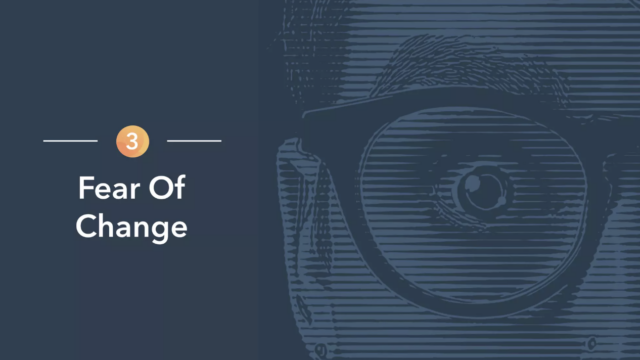
So right fear number three, I’m going to go through this quickly. And we’ll have time for questions. And at the end, that’s, that’s the idea.
So there’s a group of 200 of the top CEOs in the United States. companies like Amazon, BestBuy, CVS, Deloitte 200 200, companies, every letter in the alphabet is represented, except the letter Y.
Yes, I checked. I’m OCD. So I was like, Okay, well, I’m just looking at the list, like wait a second.I like to call a CDO, because then the letters are in the right order. But that’s, that’s just me.
And so this organisation, it’s nonprofit. And so they had this long for decades. This definition was what are the purpose of a corporation? Why does a corporation exist, and their definition for decades was to deliver shareholder value.
That’s why a corporation exists. That’s its purpose, until two and a half weeks ago, and two and a half weeks ago, all 200 of those CEOs signed off on a new declaration, a statement on the purpose of a corporation. And they said: it’s no longer just about creating shareholder value.
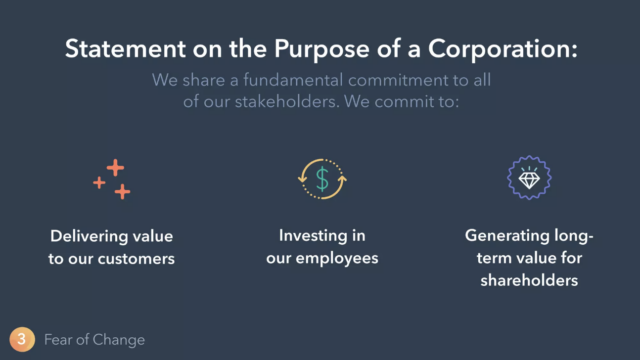
In fact, this is taken directly from the new statement that says we share a fundamental commitment to all of our stakeholders, and we commit to delivering value to our customers, investing in our employees and other things, communities, and then at the end of the list is generating long term value for shareholders.
And yes, this might mean some cynics or sceptics might say, Oh, well, that’s feels like a PR stunt. But just the idea of this, like being out there, I think is cause to celebrate, I thought this was really, really good news.
And the reason is one of the things kind of we’ve learned, and this is non obvious is that you’re actually building two products or two experiences in a company, you’re building the thing that you build for your customers. And then you’re building the thing for your employees for your team, which is your culture.
So those are the two things that I think some of the best companies kind of really think about very mindful of both of those things. So you should be building those two and they kind of feed into each other and create this kind of virtuous loop.
And so we like to think about this is that people are your people on the team members are customers too, and the product they’re actually adopting is Is your culture? So if you think about that, if you think about culture as a product in the same literally the same way, I mean, literally, I guess I don’t actually mean literally.
Am I should I was doing so well there is that what you should do is on this quote from Kathy Sierra who spoke a bit of software, who is awesome. Is that, okay? Like, we’re not really building the product to be awesome, we want the customer to be awesome.
So the question, what makes for a great culture is actually whatever allows people to do their best work and makes the employees themselves awesome. Okay, one of the reasons this is important is in the same way, you’re kind of fighting for customers of your traditional product, you’re also fighting for customers of your culture, you want to hire the best and the brightest everywhere.
And there is a stark imbalance between supply and demand of exceptional talent. We all know this, we feel this based on whatever market you happen to be in. And that’s not getting better, it’s getting worse over time.
So then the question is, what’s the flagship feature people want from your company? What do they want? What will help you win? And the answer, of course, is you need a machine learning powered approach to recruiting on the blockchain.
Of course, I’m just kidding. But there’s a decent chance there’s a Silicon Valley startup right now whose business plan is exactly that. So maybe we’re onto something. So I think the the flagship feature is actually flexibility. If I were a betting person, I would say that’s the feature that’s most desired. So flexibility along multiple dimensions, geographic flexibility, people want to work from wherever they are.
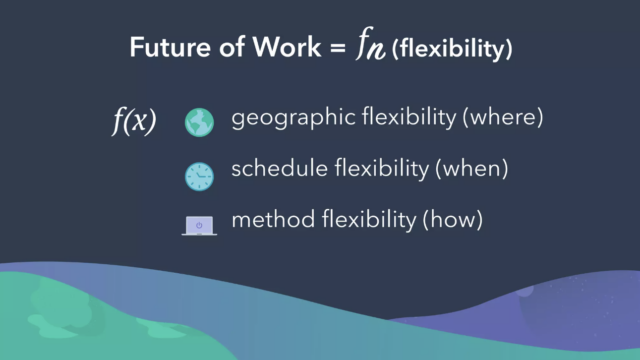
People want schedule, flexibility, want to work, whatever hours, they want to work, and method flexibility to deliver the outcomes of the business to seeking that are in line with the company’s values, but they want to do the work however they see fit, essentially, that’s, and of course, you get even less willing to take them off the extreme.
But this is what if one were to write a function to say, Okay, well, what’s the probability of success of my company culture, my ability to attract star talent, these are the coefficients.
I don’t wait to actually be, of course, other things in there. But I think flexibility is one of those flagship features.
So there’s something we’ve been investing in at HubSpot for for a while. And so one of the patterns we’ve noticed is that and so we’ve, as an industry, product builders, so we know that customers kind of want to connect with us, as normal customers, like wherever they happen to be whenever they want to however they want, right. That’s why we’re doing kind of more and more online e stuff. I think there’s a parallel employees want to work where, when and how they want. And then if you factor that out, it’s like, oh, this is it’s like, it’s the same thing. So we can think about it the same way.
And so the best way to kind of win the battle for talent is to invest in having a distributed team, which is uncomfortable. Trust me, I know. I’ve been fighting the good fight within HubSpot for a while it’s working.
Now we have 200 full time employees that are remote at HubSpot. This thing is what’s most interesting. So on our jobs website, which we get a fair amount of traffic on, it’s the second most the word remote is the second most searched for term. So this is a desired feature, this is a signal, I would bet you money.
Most tech companies, if you looked at your respective job sites that you’d find similar pattern that remote would likely be in the top five easily. And that if you put all the employees that were part time remotely or full time remotely all together, the single largest office at HubSpot would be the living room, and we’re just getting started.
So my kind of message to you would be is to embrace remote work, we’re investing remote employees are kind of growing over time it’s working in and it’s hard, we can talk after the session we can, if you have questions around it, we can do it. And the lesson I’ve learned here and this has been a tough one, both to kind of accept and to communicate to others, like remote people or people who knew, right, it’s and so all the things that you do to kind of keep in engage and empower all those things.
For co located folks, you should do those exact same things for your employees, you should design experience actually, if you were really really good around those folks to kind of make them feel included help them feel included. So part of that, in part of this is that if you want people to do their best work often their best work is in while they’re in their pyjamas and this Venn diagram illustrates my relationship with pyjamas.
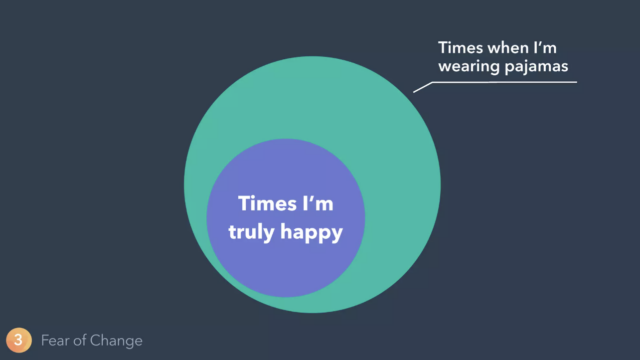
I don’t think I’m alone in this in this relationship in terms of my love of pyjamas and remaining in them. It’s a growing trend.
So I took this idea and distilled it down to a business principle which just came up with a few weeks ago that I will share with you which I call the the pyjama principle. It’s very simple.
It says the success is proportional to the degree to which you let people stay in their pyjamas. It’s not complicated. It works. It’s not just employees like if you look at product companies like okay if you can just let people Stay in the Netflix Amazon like Dollar Shave Club. All of them pyjama principle, it’s not an accident. So the thing we often fear is just changed, like, Okay, well, we’ve been doing this way we’re selling for shareholder value, whatever thing we should actually fear is just becoming static, which is what death is a company that does as well as a good example.
Nick Francis, from Helpscout, will be speaking there this week, love the company, but they get this idea both around culture and communicating it and making sure it’s kind of declared and articulated. And also this notion of really making everyone on the team kind of feel included.
So I encourage you to talk to him about that. If you run to them in the halls. They’re doing remarkable things.
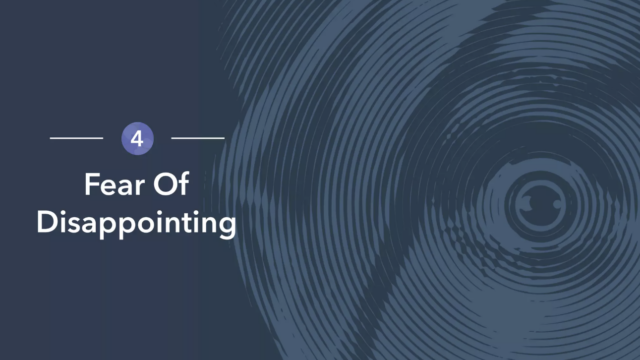
Fear of disappointing people.
So this Venn diagram shows, chocolate and peanut butter, two things I love. And if you put those two things together, you get the peanut butter cup, the magical Peanut Butter Cup, and this is the OG PBC, which would be a great band name for those looking Gpb. So you could like to do a remix of the remix of Old Town road.
And so the big PBC this package had exactly two peanut butter cups. And they were identical. Two of them. Then people came back and said we want more cups. We need more cups. So Reese’s responded. Sure. Here’s the king size, you’re sure to win an Olympic medal with this. Go forth and prosper.
Actually, we want one ginormous cup. Sometimes we’re just having one of those days. Some of them call us call them weekdays. Just one pick up and Reese’s responded. Sure. Here’s a big cup. Knock yourself out.
And people came back Actually, you know what we really like m&ms. We really, could you make Reese’s, like m&ms. And Reese’s responded: Sure. Here’s Reese’s Pieces. They taste like Reese’s, but they have uglies. 70s colours. Enjoy. No, no, we’ve got it. We’ve got it.
Can you put the tiny little Reese’s inside of a Reese’s cup? And recess responded like that you guys are being ridiculous. This is ridiculous. But sure, here’s Reese’s Pieces, because we heard you like Reese’s. So we put Reese’s in your recess.
And this went on, and on and on and on and on. 61 more times.
Until one day, Steve Jobs said stop. This is crazy. Now, Steve Jobs did say this. This is a direct quote. But he was not talking about reeses. He was talking about Apple.
And Steve Jobs had just returned to Apple in his second stint because he was let go, whatever. And he came back as the interim CEO iceo, which I thought was a cool title. He showed us cuts a little things. But so he came back. And at that time, Apple was losing money, projected by most analysts to go bankrupt within the next 90 days.
They had hundreds of products. Because what they had done is they had listened to retailers, every retailer said, Oh, we want this particular flavour of the makeover. So we can be exclusive and unique. You can only get that one here. And so they just kind of proliferate as a product portfolio.
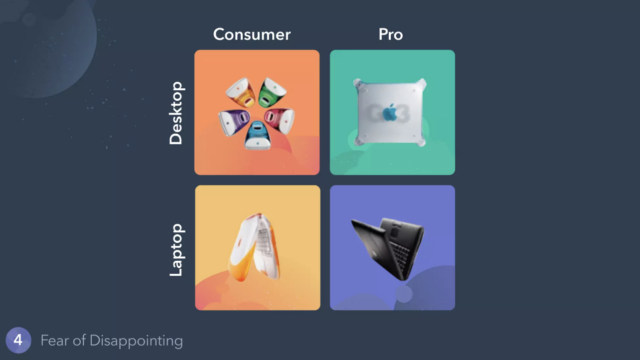
So what Steve said, it’s like, we have these four boxes. Every product we sell is going to fit in one of these boxes, either a consumer product or a professional products, either a desktop or a laptop. And if it’s not in one of these boxes, we’re not going to do it.
And this, by many estimates, was part of the genius of Steve Jobs. But apple in the subsequent 12 months, made hundreds of million dollars in profit and turn the company rallies just this notion of simplicity.
Because I think the mistake we make is like we think customers want choice. Like they want the freedom of choice, but they actually don’t like choosing things. As it turns out. It’s just not. It’s not a thing. It’s like when I go into Baskin Robbins like yes, you have 31 flavours. Just give me my vanilla and just let me go.
And so the question is like, how do you fight this kind of natural move towards complexity and get comfortable disappointing people, which is what you need to do. I’m sure when Steve Jobs made that declaration, there were lots of people that were disappointed that their favourite product and it’s just not going to happen.
And so I’m going to share with you this is an internal doc HubSpot as part of our strategic planning process, we have this thing called the MSPOT. I’m not gonna run you through the whole thing that’s not that important thing that was important to us. But the thing that has been most useful so we kind of define our targets and things like okay, Ours are the equivalent of spot and we so we say, Okay, well here are the people we’re serving here the plays that we have here, the things we’re going to do, those are the plays. And this is we do this every year.
But then the most important thing here is the thing that’s on the bottom is the omissions. If you take nothing away from this talk at all, take this away, is that what we do every year is we debate and discuss and we put things on the list of omissions.
And we said explicitly, we have as a team discuss this, this, this, this, this and this, we’re doing some. But here are the things we have decided deliberately not to do. That list of omissions is magical.
Disappoints a lot of people at HubSpot, right? Because every possible thing that could be there are 10s, if not hundreds of people that’s like, yeah, that’s a really good idea, we should do that. And then it shows up and happens to me all the time.
It’s like my pet rock shows up on the omissions list in any given year, it’s like, but these just the kind of clarity around that. It’s something that it’s like, otherwise, you know, what ends up happening, if you don’t have the emissions, let’s all hear the things we’re doing. And we thought, well, that’s good enough, by the way, the emissions that was a, like a v2 adjustment, the original thing was obstacles. It’s like, Oh, we have our planes. And here are the things that are going to get in our way. That was a bad idea.
Obstacles was just a way to say, oh, here are the reasons this thing is not going to work. We already have identified them upfront. So it’s like excuses, baked in. Omissions has been awesome.
So I would encourage you to think about like as a team sitting down deciding deliberately things you’re not going to work on. So the thing we fear is disappointing. A few people I think we should actually fear is not delighting the many, right? So it’s okay to disappoint a few really good example here is his superhuman Rahul, friend of mine, from superhuman, and he’ll talk about this I’m not going to but so he’s completely okay with disappointing a few in order to kind of delight them and he’s all about the whole kind of go to market model superhuman is, is about that.
In fact, one could argue he’s actually really okay with disappointing the many, in order to truly delight the few. It’s a very interesting kind of model, and it’s working really well for them.
Want more of these insightful talks?
At BoS we run events and publish highly-valued content for anyone building, running, or scaling a SaaS or software business.
Sign up for a weekly dose of latest actionable and useful content.
Unsubscribe any time. We will never sell your email address. It is yours.

Last fear, the fear of the truth.
So this is the mega marker. Activity bucket. Looks awesome. Love the product. It’s washable. Parents love washable things. Partly why we love our kids is because they’re washable. So if you look at that mega marker activity bucket from the top, here’s what it looks like.
When you open it. Right, right, exactly. It’s like, Okay. Now, some mice like well, the label the tops at 150 pieces did not say 150 markers. So they didn’t lie, says 150 pieces. I’m like, yeah, you try explaining that to my three year old niece, that says 150 pieces.
And so they put a piece of paper and like anyway, so my message here is that they had every right to do this, right? They’re not lying. But we have every right to distrust this company. We do and we will distrust this company. And so the thing we’ve kind of learned is that like in this age, like we don’t hardly trust anyone anymore, right? Like, it’s just so hard to have this trust.
So I think there’s this opportunity for companies to stand out that says, you know, you may not have the practice, first to market, however, has a longest list of features and checks all the RFP boxes, but you have a pretty good chance of earning the most trust in your customer base.
I don’t care which company you are, how small you are, how big you are. If you can kind of deliver that trust, I think you have an advantage. That’s a doable thing.
And so in my mind, trust is very simple products should do the things we want expect. And they don’t do the things we don’t want and don’t expect. So if I sign up for a social network, I expect to share photos of my cats connect with long lost classmates, mostly cats. Like don’t expect us for my data to be shared.
That’s not part of the experience I envision with third, you know, third parties. Without my they don’t have my best interest in mind. So I think company should take the oath of experience, which is we will deliver the experience the whole experience. And this is the important part, nothing but the experience.
So just deliver the thing that you promise and don’t do shady things behind the scenes. And I think that is what leads to trust. Another internal thing from HubSpot.
So the most one the most painful lessons, we’ve had companies 13 year history happened this March, we had a major systems outage, like massive like the system went down for better part of two days. And it was like across the entire application was not like one part it was not just some customers it was all customers. It was terrible. awful, awful, awful, awful, awful.
And so we had just this internal meeting after that. It’s like okay, like, where did we go wrong? We do all the five why’s that root cause analysis we figured that out. But part of what we came out with was this thing we call the main cell? So the first thing, okay, like, here are the things that we think are important to our customers. And it’s, it’s a little bit embarrassing that I had not done this sooner, we had not done it sooner. We hadn’t truth be told.
We knew it was like these things were important. But now we kind of rank them and said, Okay, here’s the things. And then we draw lines. Okay, so security is super important. That’s like the Hierarchy of Needs fundamental thing. Infrastructure has to stay up reliability, performance and usability value, and then growth. And so we said, okay, here, these kind of bottom five things are, like just paramount to the business. And so we said, okay, all teams, we have 100 plus product teams roughly smaller HubSpot. 102.
All teams will stop all development work, on growth, on value on new features on everything, until we can demonstrate to ourselves that we have actually, like delivered on the on the core needs of our customer base. Scariest thing we’ve ever done. And so then folks were asked like, Oh, so like, how long is this code red. And we’re like, until every team and then we’ll document it’s like, okay, here are the things we found.
Like, it’s like, and we made this long list. And it was. And so this year, we have delivered, those teams that were in code, red delivered no new features, we told our customers so we can have a go for 26,000 people, by the way. We’re in code read apologies for the outage. In some ways. I would never wish this on any company. It wouldn’t wish of course, wouldn’t wish on that spot. But that was a wake up call. For us. It’s like having kind of a heart attack and living through it. It’s like, Okay, well, we need to change something.
And so. So the other thing I would say my recommendation and like, by the way, the one things we were fearful, I was like all the engineers are going to quit because everybody wants to work on new stuff. That’s much more fun. As it turns out, only one engineer left for that reason. I mean, like, everyone was like, Oh, thank you. This is actually good. Because it gives me an excuse to do the right thing. Because I’ve been worried about that particular piece of code. This has been bothering that we’re running so fast.
I didn’t want to have to explain to my product manager like ruefully that anyway, so it’s worked out well. So the thing we fear is being truthful, like whoa, here’s how it is the thing we should actually fears is just being unworthy of trust. That’s the thing that actually kills you.
Alright, so wrapping up. So you remember this pool. I went back to that same hotel, that same pool my nemesis with with my son. Only this time, he wants me to get in the water. Because now he can swim. easy for him. No big deal.
And so I told him, it’s like someone else’s name. Just like, because I strangely suspect he wants to try and teach me how to swim. Like, someone, you’re, you’re not going to be able to teach me how to swim. Like I’ve been on this planet for decades, and have not managed to do it. So well just get in the water. Like that. I’m not teaching you how to swim. I’m just gonna teach you how to dunk your head.
He’s like, do it. Like you mean like right now? It’s like, yeah, just do it. Just put your head in the water. Like, how long was it like two minutes, three minutes. He’s like, Dad, that was one second.
It’s like this time travelling thing whenever it felt like an eternity to me. Marvel reference, not a big deal hump. So he’s looking at now do it again. But don’t hold your nose. Right. Now do it again. But keep your eyes open. How did you know my eyes were closed. I know dad. Okay, do it again. Do it again. Do it again. Do it again.
It’s like now do it dunk your head, eyes open, don’t hold your nose and flail around as if you’re trying to move in some general direction. Okay, so I flail around with all the grace of a drunken swan. And do it again and do it again. We’re in there for hours, like real hours, not like the time travel hours.
And so this is me in that same pool and then here I go. And so by the way I have my Apple Watch and too many clothes on because like who does all that moving without getting credit on their fitness tracker and this is about this point I panic. Is this one of those like infinity pools that the wall just doesn’t come with like that’s not how infinity pools work our mesh. The wall is coming. It’s like right there is a physical thing anyway, so I get there and I have my like Michael Phelps moment.
By the way, look, the whole pool is only like five feet deep the whole way. But I had my eyes open. I had my eyes open. I was not cheating. I did not stand up. I even though I could have the whole time.
So what’s like, what’s the message here and messages?
You know, we’re all trying to build better software businesses were trying to overcome some of these fears or manage them.
And the answer is: You don’t need to do any of them overnight. You just need to dunk your head like listen to one piece of customer feedback. Look at your sales process, look at your book, fix one thing, make the experience better for customers than then just do it again and do it again.
You don’t have to fix it all at once.
So thank you. This is always a pleasure.
Mark Littlewood
I know you’re not big on hugging, so I feel very privileged. Fabulous.
Let’s have a couple of questions. And then you can badger Dharmesh all the way over.
Who got a question. Yeah, right. Who’s not Glen, who I keep? It’s my eyes, my eyes.
Audience Member
Thank you, Dharmesh. I too, would do anything that my sons told me to do.
In the spirit of dunk in your head, first of the things you described, you talked about transition pretty well, with, with my spatial one exception, which is talking about remote work, right, which is a big area of change, which is an area of difficulty. I think for a lot of us. What would be your recommendation for dunking our head to get started with that?
Dharmesh Shah
A couple things. One would be just hire some remote folks, if you don’t already have some.
And then it would be around. So the start would be step one, like step one a half would be in this, I think works well is just have a, a team that’s completely just remote. For all intents and purposes, like any other team, which just happens to be all remote folks that are kind of distributed.
But then just all these little things like go back through your kind of job description, like sometimes other like remote work possible. But go back to your job postings, you know, rexon say, it should read as if someone that was remote would actually feel like they would belong here that they’re not gonna be a second class citizen. And that sounds like a trivial thing. But if you just said Oh, like, you know, here’s the location supported, like, oh, we’re hiring and W whatever it’s like, and you can just put the word remote there that doesn’t fix it. Because if you’re almost like, Oh, well, that’s this company really, really, really kind of want me there.
So that’s those are the two simple things. And I’ll I’ll put the question on the backburner back processor. No. Big more about it. But yeah.
Audience Member
To me, the remote part of the flexibility kind of function is almost like the easiest part. What have you guys done to help? Like, how do you for companies that don’t feel comfortable giving flexibility for how you do the work or, you know, the environment you’re like, although there’s there’s a lot there, right. It’s not just remote work, like what is HubSpot done to help expand the flexibility for the team?
Dharmesh Shah
Yeah, so part of it is, and this has been kind of well documented was the importance of autonomy. So Daniel Pink has written about this autonomy, mastery and purpose thing.
It was a little bit easier for us when we made the remote switch, because we’ve had that notion of autonomy kind of baked into HubSpot. But let’s say we didn’t have that.
Part of it. This goes to the kinds of the Okay, our discussion earlier is that and I’m a control freak myself. So it’s hard for me to like us like Oh, look. So I fought remote work. By the way, HubSpot. I even thought like even office outside of Cambridge, the first hundreds of people at HubSpot had to be like, in the same buildings, I had no idea how to take this culture that we thought that was pretty good, and then transported across an ocean.
So I was one of the naysayers but I think autonomy thing is like, like figuring out what you actually care about. It’s like, it’s I know, like, loss of control is hard. It’s, it’s like, Okay, well, why does it really matter to me? How someone gets this thing done, if they’re, like, producing the results, and their peers don’t hate them. And they’re in line with our overall values.
And this is gonna sound like a trite answer, because it is, but it’s just kind of managed through that loss of control, fear and help people get through, it’s like, Okay. I think often what happens, the reason why we kind of fight these things is that we it’s a form of like, premature optimization.
It’s like, oh, we’re not gonna do these things. Because we think we do them. And then people will do this, and then bad things will happen. It’s like, Okay, well, why not just try and let those bad things happen? And it’s like writing a legal contract to kind of cover all possible cases, it’ll be okay.
So I would just suggest, and maybe you started with a kind of small team, it’s like, Okay, well, we’re gonna just gonna do this and let them figure out how they want to accomplish this thing and hit the goals that they need to be hitting.
But as it turns out, people are grownups. They’re adults, when you give them that, like, I know, we have all these kind of sometimes distorted fear, or amplified fear that they’re going to go off and do crazy things. It’s like most of the people that you’ve hired, invite them for a reason. And they can be trusted. And in the event, you do screw up. It’s like when things go horribly, poorly, that’ll inform your recruiting from then on. I think that’ll be a good thing.
So as you have a culture of autonomy, it helps you recruit and hire better.
Mark Littlewood
Because it was one of the back here.
Audience Member
Oh, hey, unused on the slide you said was the very most important At the bottom was the omissions. Of course that’s about focus. So as you start to grow, you get dozens of people, and they’re just amazing, smart people full brimming with ideas, and it feels like the default is to lose focus.
What’s your advice on how to recapture and retain focus?
Dharmesh Shah
Yeah, I’ll tell you first, personally, what I’ve done. And then I’ve tried to communicate this out to the team and the company at large.
So I have this kind of my mantra has been, I had a slide in here somewhere that said, this, I took it out around my four word strategic plan for myself is do fewer things better, which is basically a form of focus, so do fewer things better.
And the way I’ve kind of approached it for myself, and where I spend my time, so I have exactly three things identified. And it was for the longest time, culture, oddly enough, brand, the story of HubSpot, and then what I call boldness, making sure we’re taking enough risk.
And so I would eat so I would get invited to meetings all the time, I would have lots of things on people to ask me. And I would say, this is not one of my three things. I love you. It’s awesome. I think your team is important. But this is not one of my three things.
So step one is identify the things you want to focus on, and then get really, really good. It’s hard because I struggle with this. And still do, like saying no is hard. But it’s just like every time you say yes to anything, it’s zero time is a zero sum game, you’re saying no to something else, you just you just don’t even accept it.
So if you accept a meeting, or you just get used to saying no, and being okay with that. And so I tell that to the team, I tell that to the product leaders or whatever it’s like, even if it’s me, if I’m asking you to do something, and it’s not on your list, it’s like it’s not something we talked about, like your Oh, this is our charter, you have to wait until the next time we have can open this back up for discussion.
I try to impart that to the company as well just say no disappoint people, it’s hard, easier said than done.
Mark Littlewood
One final one here. Sorry.
Audience Member
Really enjoyed the presentation. Thanks so much. Have you with remote work had changed the way that you structure your product team that you can’t really riff? Engineer Product Manager in the hallway anymore? And do you try to keep them in same timezone? Or is there a certain ratio product engineering that you try to maintain across the 102 teams you mentioned?
Dharmesh Shah
That’s great question. So that was the thing we’ve tried to do, and we didn’t come up with this, we just did a bunch of reading on it, but it has worked for us is that we keep the remote folks kind of together, roughly.
So we have our teams, our four to six people, three engineers, the product manager, design person paired up with every product manager. And so that unit essentially stays together. So all of our remote teams are not. So you wouldn’t have an individual atomic unit, with people that were from different time zones. So we try to keep them roughly together, that’s helped a lot.
But then they have this same or similar kind of esprit de core, they feel like they’re kind of together. They’re all in the same kind of boat, so to speak.
And then what we’ve done is that we said, okay, well, we’ll have multiple remote teams together. And then we’ll treat that as a virtual office. And so then they have an office managers like it’s like literally someone that will help plan cultural events in terms of them going out. And so they can actually kind of get to know each other as if they were co located essentially.
And it’s funny, because it seems like I’m I’m kicking myself for having kind of gotten to the party so late, but it’s I will bet you money. If you look across your team right now, however many people you have, even people that are sitting right next to each other, they’re slacking each other and emailing each other. Right?
Like the fact that, yes, you get the hallway conversations, and there’s definitely trade offs from at work, but they’re never as high as most people think they are. It’s just not that bad. It’s not been our experience. It’s one of the reasons. We’re like investing.
But the upside is dramatic, especially if you’re looking for a diverse workforce, like your probability of having a non homogenous team goes up dramatically, just by default, because you’re hiring from anywhere. And I think it just raises the most the smartest people you will meet that would be perfect for your company, are unlikely to live within a 60 mile radius of wherever you happen to have offices, that doesn’t make any statistical sense.
So you can just open up that that’s one of the few nonlinear things you can do in your company that says, Oh, we weren’t doing remote at all before. And now we’re doing remote things. You can have an actual nonlinear jump in productivity and profitability and all those things are really good things.
I think and can can happen. Thanks for coming. I’ll be floating around. I’m not great at q&a, but it’ll be all right.

Dharmesh Shah
Dharmesh Shah is co-founder and CTO of HubSpot, the NYSE listed inbound marketing platform with a market cap of over $7 billion and $590 million revenue in past year.
Prior to founding HubSpot in 2006, Dharmesh was founder and CEO of Pyramid Digital Solutions, which was acquired by SunGard Data Systems in 2005. Dharmesh is an active member of the Boston-area entrepreneurial community, an angel investor in over 60 startups, and writes about startups, inbound marketing, and company culture. Dharmesh holds a BS in Computer Science from UAB and an MS from MIT but learned everything he knows about the software business from his regular attendance at Business of Software Conference since the very first one!
Next Events
BoS Europe 2025 🇬🇧
🗓️ 31 March – 1 April 2025
📍 Cambridge, UK
❗️3 weeks to go
Spend 2 days with other smart people in a supportive community of SaaS & software entrepreneurs who want to build great products and companies.
BoS USA 2025 🇺🇸
🗓️ 6-8 October 2025
📍 Raleigh, NC
❗️Early bird ticket available
Learn how great software companies are built at an extraordinary conference run since 2007 to help you build long term, profitable, sustainable businesses.
Want more of these insightful talks?
At BoS we run events and publish highly-valued content for anyone building, running, or scaling a SaaS or software business.
Sign up for a weekly dose of latest actionable and useful content.
Unsubscribe any time. We will never sell your email address. It is yours.